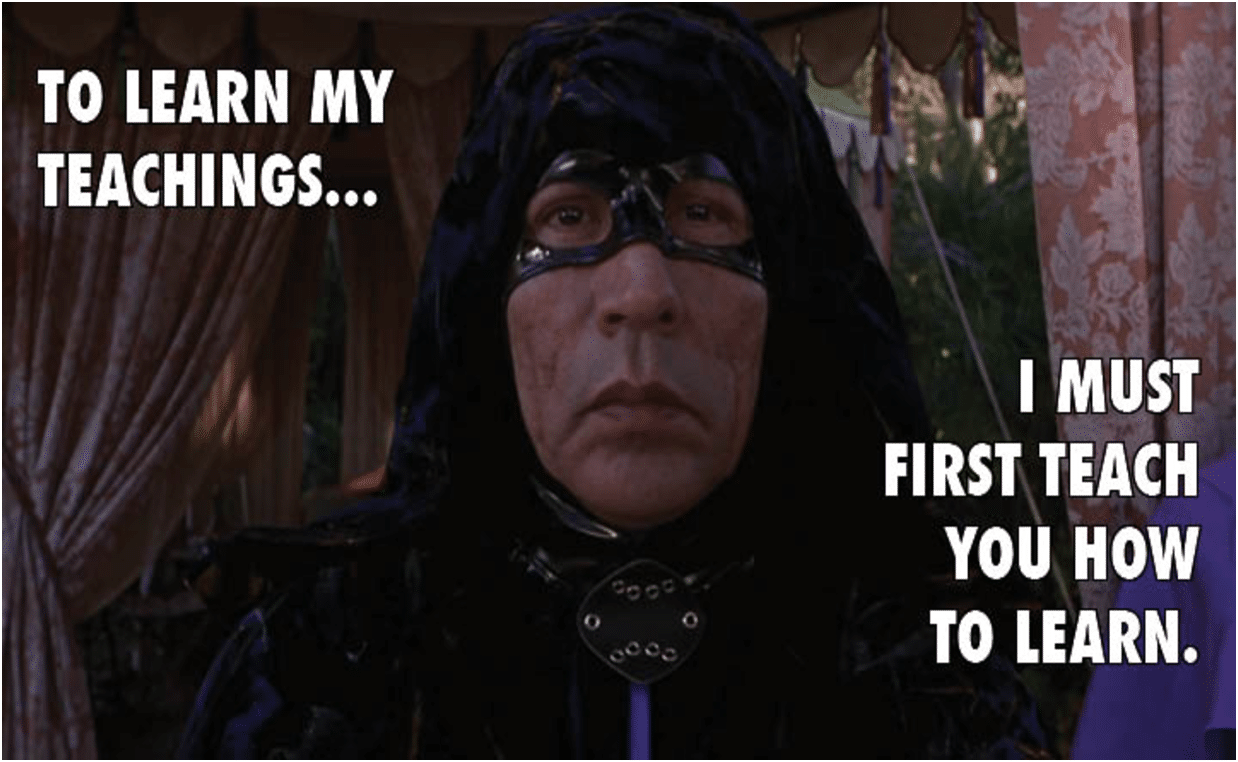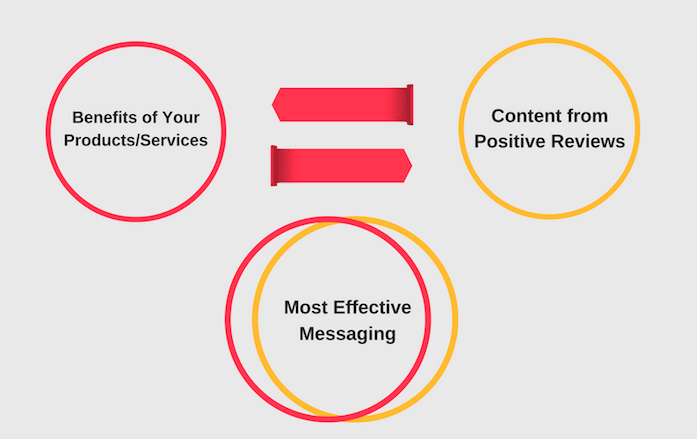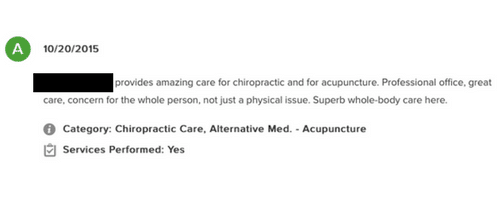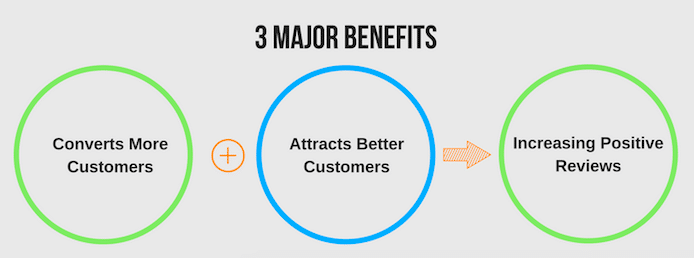If you hit the regular marketing blogs up semi-regularly over the past few years, you’ve heard the term “brand story”.
Boiling down what your business does at a core level, and then spreading that news in a concentrated message across every bit of advertising and content marketing that you do—not at all a bad idea.
Whatever your brand puts out; it needs to communicate exactly what you mean in a clear way.
But what about the talk that’s not coming from you?
According to recent research, between 80% to 90% of consumers trust recommendations made by peers (i.e. reviews) while anywhere from 14% to 29% say they trust advertising.
This stat means that all the storytelling in the world is only worth as much as the average story your honest reviews are telling about your business (or your clients). If that scares you a bit, and it should.
I’d like to go over several ways to help align reviews with brand messaging. Kind of a what to do (and not to do).
Sound good? Let’s go.
First, What Is the Story?
Not at all trying to write another post about brand story here (we’ve all heard enough), but every business should have a very good idea of what it is they want customers to know.
Often times, small business owners and entrepreneurs have a hard time with this point; something agencies will be familiar with. It’s not that they don’t know what they do. Far from it. It’s that owners typically know the products and services they offer too well.
Potential customers (and potential reviewers) aren’t as knowledgeable in terms of those things businesses do so well.
The knowledge barrier (on both sides) is what causes poor messaging, and I’d argue, a decent percentage of poor reviews.
If you’d like to see more about developing a brand story, here are two great guides for for further research:
Align Your Story and “Theirs”
Building a bridge between business and consumer is the age old art form of copywriting.
One of the best things about the internet age is the ability to cheat and take the words you use in your pitch directly from the mouths of those you are hoping to influence.
Instead of trying to do the dog and pony show, copywriters create the scenario consumers face (exploiting the pain) and then rush in with the solution. That said, the most effective copy includes details down to the words and phrasing of those ideal buyers.
You may be thinking that this sounds artificially profound, like something Sphinx would say from Mystery Men, but in order to sell your (or your client’s) stuff better—you have to look at who’s already bought.
The best place to garner these insights? Wikipedia. No, reviews, of course.

Using screenshots with actual reviews and descriptions for chiropractors in an undisclosed location from Angie’s List, we’ll take a look at three ways to use reviews to better align your messaging.
Number One: Use the Words Customers Use
Take a look at these screenshots of reviews for chiropractors:


They’re both good, seemingly honest reviews. Instead of you saying, “Fantastic! This doctor’s reputation software is working.” You could go a bit deeper and notice common language used between the two.
Ding. Time’s up. They both mention the word “adjustment”.
Wanna know the sad part? The “best” description for a chiropractor in this area didn’t include the word that was being used all over the place (we checked). Seriously, it wasn’t there in the descriptions (see the ‘best’ one below).

There is tons of copy in this description, but it doesn’t bother to use the most common word I found in a few minutes of research (BTW, the blackouts are just names, not the word ‘adjustment’).
It’s not a terrible description, but doesn’t it sound salesy?
Words here could be changed. Upon further research, you may notice that one of the reviews used “fix my pinched nerve”, but the copy uses words like “treatment”. If you find this is a common occurrence, you need to change—not your customers.
Little words make so much of a difference. You may as well be using a different language than that of the very people you hope to serve.
Marketing doesn’t dictate the conversation as much as it did before. We may all love shows like Mad Men, but the game doesn’t work like that anymore. Today, businesses have to blend into conversation like a chameleon and really learn what people want out of them and begin to speak and act in that way.
How to Do It
Go over your (or your clients) reviews in all of the places they reside. Look at them, have your team look, too. Find the words and even the phrases people are using to describe your services and adjust your messaging.
Same services, yet better communication.
Adjust the copy in all of your advertising, not just descriptions. You may even want to re-write blogs, or write new ones that appeal to the common phrases and services used by your customers and not by the knowledge of the product’s themselves.
You’re still expressing the benefits of the products and services, but through the lens of those you hope to reach. Take a look at the image below, if you’re a visual learner like me.

Number Two: Highlight What They Highlight
Similar to our first tip, but a bit more nuanced.
Industries change over time and sometimes the consumer is the best place to look to see those changes.
Keeping it chiropractic, a couple decades ago, people thought acupuncture was a freak show. If you did it, you were “only trying it out” or you hid it so your friends and family wouldn’t make fun of you.

Even today, the U.S. isn’t in the top 5 “interested” countries in acupuncture according to Google Trends. Or, so we’d think.
Take a look at just a couple of the screenshots of American chiropractic reviews.


These are just two, but there were more. People are buzzing about the benefits of getting stuck with a bunch of needles. Chiropractors may offer this service, but not take full advantage of it.
While they’re trying to advertise for car wrecks and other angles that are highly saturated, acupuncture could be a legitimate service to begin drawing in new clientele.
Adjust your brand messaging to attract those new clients and gain the edge over others in the same market.
How to Do It
Very similar to point one as well if we’re talking about your company/brand.
Marketers may have a bit tougher of a sell with this one. To use our example, going to your chiropractors and trying to get them to focus on acupuncture versus their cash cow adjustments, may be an issue.
To do so, bring your research. Things like:
- Local search results
- Reviews that praise their service
- Forecasted revenue increases based on data
Number Three: “Fix” (Or Educate) What They Don’t Like
For our last tip of aligning your brand’s message with the ones in your reviews, we need to get negative.
Your negative reviews (and even positive ones with some critiques) can help you tweak the story and garner more interest while losing fewer customers for you or your clients. While some of the bads are just going to stick, it doesn’t mean you can’t use some.
We’ll re-use one of our screenshots from the top. It was positive, mixed with an educational tidbit.

The section I’d highlight is, “I was super sore and felt stiffer than when it came in,…”
Sure, the client goes on to say that a few hours made all the difference. But how many bad reviews can come just a few minutes after the visit, especially when you ask for their review before they leave the office?
If your client doesn’t explain to their clients that this is a reality—part of the story is missing.
How to Do Fix It
While this isn’t a direct message, you still want it to be conveyed quickly.
You won’t want to do Facebook ads telling potential customers, “It’ll hurt worse before it gets better.” That would be silly.
That said, if this crucial point isn’t shared at some point, it could lead to clients telling a bad story (that people trust more than you, remember?). To fix this, you’ll have to brainstorm several ways to communicate the needed information.
It’s quite possible you’ll need to use more than one method to ensure the message gets across.
I’ll use this specific problem in hopes of helping your creative juices flow.
- A quick explainer video that shows “what to expect” before, during and after the visit sent to the email for all online appointments.
- An insert into the paperwork, or image on tablet to be shown to new clients before their services are rendered as explained by a nurse or the doctor.
- Post client care that explains what they can expect via good old fashioned conversation before they walk out the door.
Doing things like this could turn that review into something like;
“I was super sore and felt stiffer than when it came in just like the doctor/video said I would be, but a few hours later it felt great—just as described!
More Than a Story
A brand’s story never stops, well, unless it dissolves. You get the point.
If you follow these steps and adjust the outbound and inbound marketing you’re doing to match the likes, dislikes, words and phrases of your reviewers—you’ll probably get your clients more business.
Not just any business. The type of consumers that write good reviews.

But don’t stop there.
These new reviewers will help you pinpoint and expand the copy until you can sell people even faster and determine what types of clients you (or your clients) will actually attain (e.g. buyer personas on steroids).
“The show must go on.” — Unknown
About the Author
Justin McGill
Justin McGill is the Founder of LeadFuze, an outbound marketing and sales tool to help B2B companies have more sales conversations. See 25 Sample Leads for Free.











